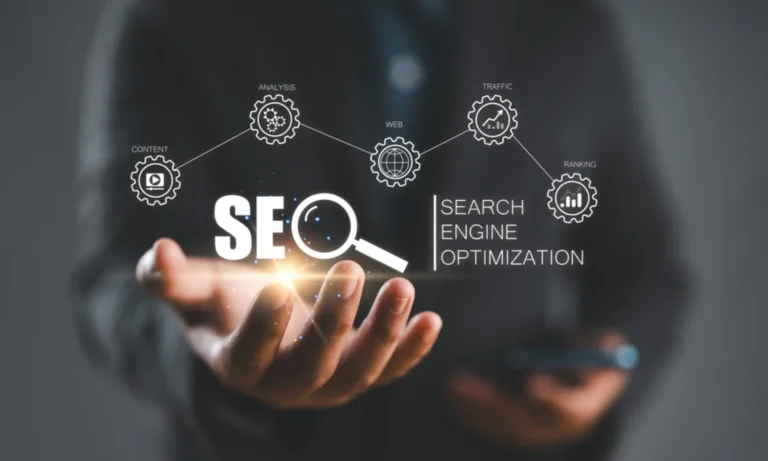What is On-Page SEO? A Comprehensive Guide

In the world of digital marketing, Search Engine Optimization (SEO) is an essential practice for improving a website’s visibility and ranking on search engines like Google. On-page SEO, one of the fundamental pillars of SEO, refers to the optimization of various elements within a webpage to make it more search-engine friendly and user-focused. By tweaking and refining these components, webmasters can help search engines better understand the content, ultimately leading to higher rankings and increased organic traffic.
This guide delves into the nuances of on-page SEO, explaining its significance, the key elements, and actionable tips to optimize a website for better search performance.
Importance of On-Page SEO
On-page SEO is vital because it helps search engines like Google understand the context and relevance of a webpage to specific search queries. While search engines rely on advanced algorithms to crawl, index, and rank content, they still need clear and structured information to accurately interpret what a page is about. Properly optimized on-page SEO contributes to:
- Improved Search Rankings: When search engines can easily understand your content, they are more likely to rank it higher for relevant queries.
- Enhanced User Experience: On-page SEO optimizes not only for search engines but also for human visitors. A well-structured and content-rich page ensures better engagement, lower bounce rates, and longer time on site.
- Increased Organic Traffic: Effective on-page SEO means your site is more visible in search results, attracting more clicks and increasing traffic over time.
Key Elements of On-Page SEO
On-page SEO involves optimizing both the content and the HTML source code of a webpage. Here are the primary components:
1. Title Tags
The title tag is an HTML element that defines the title of a webpage. It appears as the clickable headline on the search engine results pages (SERPs).
- Why it matters: Search engines use the title tag to understand the main topic of a page, making it a key ranking factor.
- Best practices: Keep the title under 60 characters, include the primary keyword, and make it compelling to encourage clicks.
2. Meta Descriptions
A meta description is a short summary (about 150-160 characters) of the webpage’s content. Although meta descriptions are not a direct ranking factor, they influence click-through rates (CTR) by providing users with a snapshot of what the page is about.
- Why it matters: A well-crafted meta description can increase CTR, which can indirectly improve rankings.
- Best practices: Make the description engaging, include the primary keyword, and provide a clear reason for users to click on your link.
3. Headings (H1, H2, H3, etc.)
Headings structure the content, making it easier for both users and search engines to navigate. The H1 tag usually serves as the main heading, while H2 and H3 subheadings help break down content into digestible sections.
- Why it matters: Headings help search engines understand the hierarchy and relevance of content on the page. They also improve readability for users.
- Best practices: Ensure the H1 tag contains the main keyword and use secondary headings (H2, H3) to organize the content logically.
4. URL Structure
A clean and descriptive URL is another key component of on-page SEO. URLs should be short, readable, and include the primary keyword.
- Why it matters: Search engines and users prefer concise, keyword-rich URLs because they clearly indicate what the page is about.
- Best practices: Use hyphens to separate words, avoid using special characters, and keep the URL structure simple.
5. Content Quality
High-quality content is the foundation of successful on-page SEO. Content must be informative, engaging, and relevant to the search query.
- Why it matters: Google’s algorithms prioritize content that satisfies user intent, meaning well-written, informative content ranks higher.
- Best practices: Focus on user intent, incorporate primary and secondary keywords naturally, maintain a balance between informative and engaging language, and avoid keyword stuffing.
6. Keyword Optimization
Strategically using keywords throughout the content is a fundamental on-page SEO practice. Keywords help search engines determine the relevance of a page to user queries.
- Why it matters: Search engines use keywords to understand the topic and match it to search queries.
- Best practices: Use the primary keyword in the title tag, meta description, URL, and first 100 words of the content. Include related LSI (Latent Semantic Indexing) keywords naturally within the body text.
7. Internal Linking
Internal links are hyperlinks that connect one page of a website to another page within the same domain.
- Why it matters: Internal linking helps search engines crawl and index your site more effectively, and it distributes link equity across the pages.
- Best practices: Include relevant internal links to guide users to other pages on your site, helping to improve their engagement and time on site.
8. Image Optimization
Images can enhance user experience, but they must be optimized for search engines. This involves using descriptive filenames, compressing file sizes for faster load times, and adding alt text to describe the image.
- Why it matters: Optimized images improve page speed (a ranking factor) and help search engines understand visual content via alt text.
- Best practices: Compress images without losing quality, use relevant keywords in alt text, and choose the right image format (e.g., JPEG, PNG).
9. Mobile Responsiveness
In an era where most users access the internet through mobile devices, having a mobile-friendly site is non-negotiable. Responsive design ensures that your website performs well across all devices.
- Why it matters: Google uses mobile-first indexing, meaning the mobile version of a site is considered the primary version for ranking purposes.
- Best practices: Ensure your site is responsive, test it on various mobile devices, and optimize for fast loading times on mobile networks.
10. Page Speed
Page speed is an essential ranking factor. Websites that load quickly provide a better user experience and are more likely to rank higher in search results.
- Why it matters: Faster-loading pages reduce bounce rates and improve engagement metrics, which can positively affect rankings.
- Best practices: Use tools like Google PageSpeed Insights to identify issues, minimize JavaScript and CSS files, and compress large images.
On-Page SEO Best Practices
- Focus on User Intent: Understand what your audience is searching for and create content that addresses their needs and questions.
- Keep It Fresh: Regularly update content to ensure it stays relevant and accurate. Fresh content signals to search engines that your site is active.
- Leverage Structured Data (Schema Markup): Structured data helps search engines understand the context of your content better and can lead to rich snippets in the SERPs, increasing click-through rates.
- Optimize for Featured Snippets: Create content that answers common queries concisely to increase the chances of being featured in Google’s “Position Zero.”
- Use Multimedia: Incorporate images, videos, and infographics to enhance user engagement and make the content more shareable.
Conclusion
On-page SEO is the backbone of a successful SEO strategy. By optimizing key elements like title tags, content, meta descriptions, and images, you can make your website more attractive to both search engines and users. While it may seem technical at first, focusing on improving user experience and following on-page SEO best practices can yield significant benefits in terms of search engine rankings, traffic, and overall site performance. A well-optimized page not only improves your chances of appearing higher in search results but also enhances user engagement and satisfaction. By consistently refining your on-page SEO elements and staying updated with the latest SEO trends, you can ensure your website remains competitive in the ever-evolving digital landscape. Prioritizing both user intent and search engine requirements is key to long-term success in organic search visibility.





